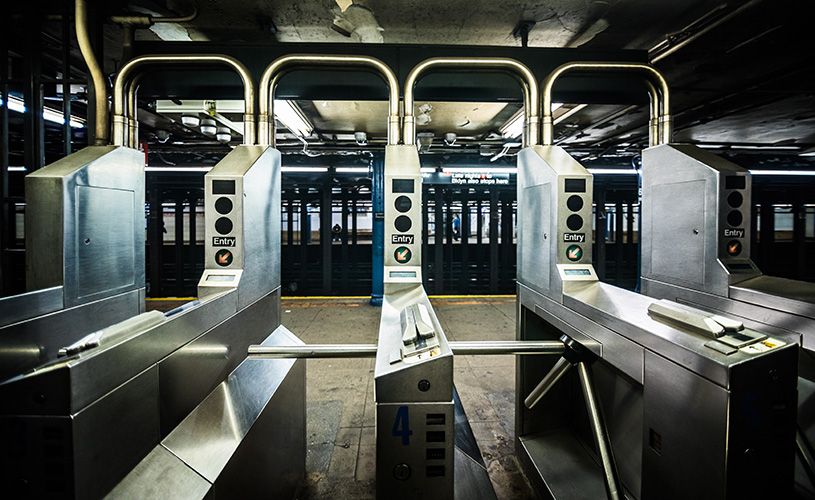
Photo by Benoit Daoust / Shutterstock.
Fair Fares is a subsidy for the poor, not the MTA
Fair Fares would help halt deportations
Funding Fair Fares should be a city responsibility
Fair Fares funding a test for New York's progressive mayor
Imagine you are a single adult raising two kids in New York City while living below the federal poverty line – under $20,000 in annual income for a family of three. Your job barely enables you to afford rent in a gentrifying neighborhood like, say, Brooklyn’s Crown Heights or Mott Haven in the Bronx.
Now imagine losing your job, which is unfortunately a fairly common occurrence in the unstable low-wage job market. Every personal expense suddenly falls on the chopping block – routine costs like groceries or paying your phone bill become a burden. You’re forced to postpone buying any new school clothes for your two children, let alone notebooks and pencils.
Your personal budget audit now turns to traveling anywhere in New York City. A single ride on the subway, your primary mode of transportation, costs $2.75. That new job you’re interviewing for? It will cost you $5.50 round trip just to get to the interview, before tacking on the extra fares for stops in between – including picking up your children from school.
RELATED: An open letter to Mayor Bill de Blasio from progressive leaders.
In a city that depends on public transportation, residents should not have to choose between going to work and eating dinner. They should not be stranded until the person holding the household’s one MetroCard returns home, or forced to walk such long distances that they are sore to the point of tears the next day.
And yet these are the stories organizations like the Riders Alliance and Community Service Society of New York are hearing on a regular basis. Those are our neighbors begging for swipes or risking a $100 fine for jumping a turnstile because $2.75 is too much to pay.
There is nary a more populist issue in New York City than public transportation. Subways and buses are truly the connective tissue that binds our city. They are among the only conduits for breaking down the barriers of both class and ethnic segregation that are, unfortunately, still prevalent.
Over the next five weeks, City & State’s editorial board will be partnering with the Community Service Society of New York and Riders Alliance to support their Fair Fares campaign – a proposal we cited in our “Best Ideas of 2016” editorial in December. The goal of Fair Fares is to convince the mayor and City Council to fund subsidized MetroCards for low-income New Yorkers, at a cost of roughly $212 million – a mere 0.25 percent of the city’s $84.7 billion preliminary budget. For our part in this campaign, City & State will be publishing op-eds from experts in various fields to make the case for why this initiative deserves full funding. These op-eds will focus on the economic benefits of funding Fair Fares, but also consider peripheral angles, such as its positive impact on the criminal justice system and undocumented immigrant communities.
When Mayor Bill de Blasio talks about bridging the equality gap in New York City, public transportation is too often a footnote in that rhetoric. He has doubled down on his plans for a citywide ferry system, which won’t do much for the low-income commuters from the Bronx that live miles from the East River. And his plans for a light rail connector from Astoria to Sunset Park will do wonders for waterfront property values, but won’t help the single mother of three get from central Brooklyn to her job in northern Manhattan.
RELATED: The best ideas to come out of New York politics in 2016.
Besides the narrow populations each proposal would serve, another thing the ferry system and light rail connector have in common is that both would operate entirely outside of the rest of New York City’s transportation system. Neither proposal envisions making use of the same MetroCard that all New Yorkers swipe for buses and subways, but rather creates an even more complicated network of transportation that, for low-income families that choose to take the ferry or BQX, could necessitate an entirely separate personal budget.
There is nary a more populist issue in New York City than public transportation. Subways and buses are truly the connective tissue that binds our city. They are among the only conduits for breaking down the barriers of both class and ethnic segregation that are, unfortunately, still prevalent. Metropolitan Transportation Authority fare hikes are increasingly putting this vital public service out of reach for our lowest-income neighbors. If we are to live up to our reputation as a progressive city, we must ensure that we are not inadvertently crippling the mobility of low-income New Yorkers.
NEXT STORY: Should New York’s kids be afraid of Betsy DeVos?


